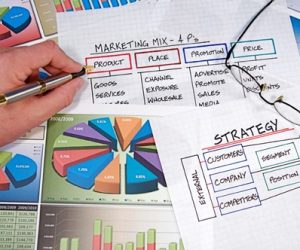A marketing plan is a written document that defines the current situation in which the product is located, and how it has arrived there, the problems and opportunities that it faces, establishes the objectives, defines the necessary strategies and programs to achieve those objectives and establish who is responsible for the objectives. Explained this, we can highlight 5 fundamental aspects of the Marketing Plan.
It is a summary of the plan that provides a snapshot of the current situation, the objectives and strategies, the main action programs and financial expectations and is located at the beginning of the document to show the main ideas in a few lines. It includes the definition of the product, the differential advantage it has over the competition and how it is expected to maintain it; the necessary investment, both at the beginning and through time and the expected results.
Situation analysis
It reports on the product, the economic environment in which the company operates and the response of competitors, to objectively analyze the circumstances that may affect the project:
• General conditions: These are the conditions that affect the entire sector in which the company is immersed and which it can not control, such as technological, social, political, legal, cultural, regulatory factors, inflation, tax pressure, credit facilities and promotion. of exports.
• Market conditions: This section discusses the size of the category, its growth, the frequency of sales, the threat of new revenues, possible departures, the bargaining power of buyers and suppliers, the pressure of substitute products, and current rivalry of the category.
• Conditions of the competition: It is the definition of the competitive set, considering both the near and distant competitors, their strengths and weaknesses, market share of each one and what are their future and probable strategies.
• Conditions of the company itself: As in the previous point, it describes the current products, know-how, strengths and weaknesses. It should also be noted the ability to conceive and design new products, to produce and deliver the service.
goals
With the conclusions drawn from the background, the objectives to be proposed by the plan, such as volume and utilities, will be formulated, clearly expressing what exactly is to be achieved, where it is intended to be achieved and when it can be achieved.
The objectives are developed by reviewing sales forecasts, the target market, problems and opportunities. The objectives must be specific, measurable and refer to a limited period of time.
Strategy It
deals with the lines that must be followed to achieve the proposed objectives. It’s about what market you have to be in; if a policy of cost leadership is to be followed or if a policy of product differentiation, etc., has to be undertaken
This is achieved by defining the customer of the product, where it buys, how often and why, how it chooses, how it is used, why it prefers the company’s product, why it responds to marketing programs, with information for both final consumers, as for those who use good as an intermediate to produce, from it, other goods.
You should also analyze the purchasing habits, such as the frequency of purchase, if the purchase decision is made spontaneously at the place of purchase, or if on the contrary the purchase decision is earlier, the percentage of users who have tried the product , the percentage that has repeated, the reasons, etc.
Support Programs
These are the methods used to carry out the strategies, described by the management of marketing tactical variables, that is, product, price, promotion and place.
- The Distribution: It is necessary to determine the method of distribution used with greater success in the market, it can be retail sale (it is necessary to know how and where the product is sold in relation to the competitors, its advantages and disadvantages), Wholesale (the sale is made to other companies or distributors, and you have to evaluate the different channels and their trends, the geographical area, the sales method, the sales staff, etc.), specific methods such as mail order sales, online , etc. and finally, it is necessary to analyze where the warehouses have to be located, their number and optimum size.
- Price: One factor to consider is whether prices will be set lower or higher than the competition, if the prices will be the same in different geographical areas, if the price will be used to communicate a positioning, the price in relation to the competitors, the price elasticity for the product studied and its cost structure. An excessively high price can lead to the appearance of competitors and a very low price can damage the image of the product since the consumer will think that it is sold poor quality.
- Communication: Includes all forms of interaction with the consumer seeking to inform, persuade and remember about the product. The main way of communication is advertising in the traditional forms of television, radio, newspapers and magazines, without neglecting the inexorable that imposes social networks with the so-called marketing 2.0
- Product: You can study alternative uses of the product, methods to encourage loyalty, more efficient ways of manufacturing the product and methods to increase your profitability.
Financial Documents
It refers to Budgets and projections based on the projected actions.
Monitoring and Control
They refer to what the periodic measurements will be to corroborate that the plan does not depart from the stipulated and that contingency plans will be established before changes outside the organization, which require changes of focus. This is because there are variations between the planned and the real, as well as the sources of these variations, data that will provide information for future plans.
Contingency plans are useful, particularly in dynamic markets, in which new products or new competitors create the need for changes in the strategies, before the final horizon of the plan.

